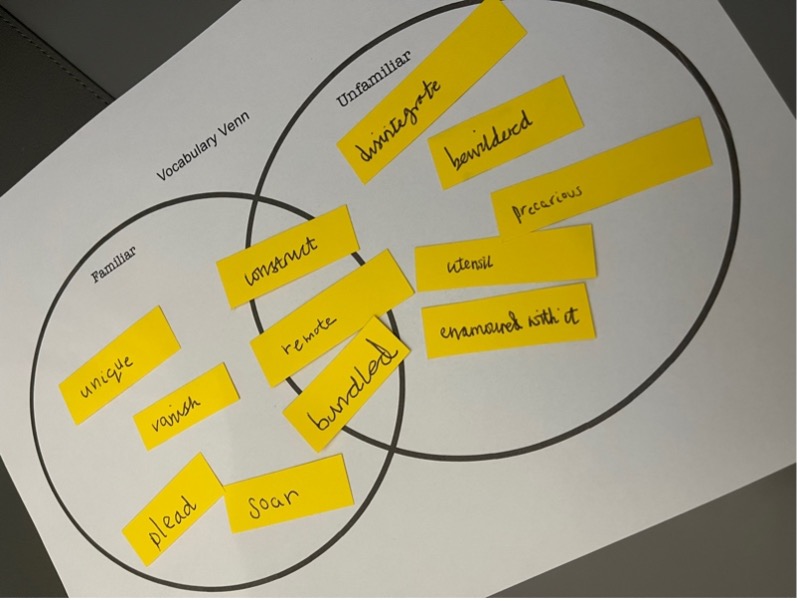Posted on: 20/09/2022
The first school I ever taught in was a stone’s throw from the sea, in an area of significant deprivation on the South Coast. Safe to assume then, as a bright-eyed, bushy-tailed NQT, that our first topic of ‘Seaside Stories’ would be relatively straightforward. We launched into our unit by exploring seaside imagery, with pupils having what I assumed to be rich, engaging discussions about the sounds, smells and sights. Before long, it became clear that their background knowledge of all things coastal was not quite where I anticipated it to be, given that it would take the majority of them five minutes to walk to the beach. One child began asking me why the beach huts I had shown them were so big. As I started to explain the sorts of things that might be kept in a beach hut, he exclaimed, sincerely, “Oh, I thought that’s where they put the crabs to sleep at night.” He wasn’t alone. Other assumptions that transpired were that all beaches were sandy (despite their local one being covered in pebbles), that you had to pay to visit, and that you were only allowed on the beach if you had a boat to get there. This was a class of Year 5 children. The lesson I gleaned from this experience: never assume prior knowledge of language or experience.
The same can be said when approaching language acquisition and vocabulary building. As adults, we have a rich tapestry of background knowledge, understanding and language to weave new information and vocabulary into. We have experiences to hang things on and connections we can make. Because of this, it is sometimes easy to brush over language or turns of phrase (particularly when it comes to literary language), assuming pupils will ‘get the gist’ of the meaning. But for our pupils at their age and stage of experience, their tapestry is more like a selection of threads; some joined, some not, and some connected loosely but with gaping holes. New language and contextual understanding do not just weave in seamlessly – it takes time, high-quality text choice and precise, careful teaching to make them stick.

We spend a long time getting to know our pupils as individuals through PSHE-based activities at the start of the year. On a similar vein, we’ve put together some suggestions of ways you can begin to explore your pupils’ background knowledge and language experiences, using them to inform your teaching and supporting pupils to weave their own ‘tapestry’ of language.
When exploring a new text, work on discussing and sorting language in context into language which is familiar, unfamiliar, and somewhere in the middle – perhaps children recognise the language but aren’t entirely sure of its meaning in this context. Similarly, words can be traffic light colour coded from red, to amber, to green (see our Classroom Toolkit for a template of these). This form of vocabulary exploration allows you to get to grips with pupils’ prior knowledge of language and flags up any potential misconceptions, giving children the reassurance that it’s ok to not know what words mean and that in fact, this is the basis for language development. This sort of initial exploratory activity can then be further developed into Shades of Meaning tasks and exploring the importance of context through Zones of Relevance as you unpick language further.

Exploring and unpicking authors’ language choices prior to sharing these with the children is key. Prior to teaching, try to look at your text through the eyes of your pupils (this will of course vary with each class and cohort). Do you notice any red flags? Subject-specific terminology and technical language (often referred to as Tier 3 vocabulary) tend to be the most obvious. Pay particular attention instead to idiomatic or literary language and turns of phrase, also known as Tier 2 phrases - language which can be used across a range of contexts but which our pupils do not use regularly in their own lives. This is the language we want them to be able to understand, use and apply. What background knowledge would your pupils need in order to access and understand these?


For example, a phrase like ‘brimming with hope’ may appear obvious initially, and it would be easy to assume that pupils would easily recognise it as a synonym for ‘hopeful’ or to simply explain it as such. But in reality, there is much more to it than that. Try to zoom in on the level of understanding needed for phrases like this. Here, pupils not only need to know what the brim of an object is, but they also need to know the phrase ‘full to the brim’ and what this entails. If we then transfer that into ‘brimming with hope’ we eventually get to the understanding that in fact, the phrase means so much more than just ‘hopeful’. Without careful consideration, it can be easy to skip over these nuances in a class read without giving it too much thought. By actively seeking out these phrases ahead of teaching, we notice potential pitfalls in understanding, thereby supporting our pupils to interpret them appropriately, gain capital in their language banks and sew threads in their literary tapestry.
It’s important that we support our pupils to build up a web of connections between what they already know and new learning. Linking to the science of cognitive theory and Ofsted’s buzz phrase of the moment in terms of ‘sticky knowledge’, we want to build up pupils’ literary banks so that language sticks. A key factor in doing this is supporting pupils to make connections through etymology and word families as well as through their own life experiences. Why not look at making connections webs with your pupils when exploring new language? Just like in Maths when we look at related number facts, think about how we can apply this to language and the links we can make between new language and what we already know. At the start of the year when you are getting to know your pupils, think about their situations and how this contributes to their wider experiences of the world and as a result, their exposure to language. Can they connect personally to language by thinking of a time where they felt the same way as a phrase you have unpicked together (for example, to use the previous phrase of ‘brimming with hope’ – when was a time they were full to the brim with hope? Could you be brimming with another emotion?). Using ‘Jigsaw feelings’ from our Classroom Toolkit is a great way of developing this further. Making connections in this way not only develops their language skills but also supports you in building up a picture of the child as an individual.
Playing and experimenting with literary language is one of our favourite things to do at The Literacy Tree. Foster a sense of awe and wonder in your pupils through your own enthusiasm. Literary language is not simply correct or incorrect – what sounds right? What doesn’t? Why doesn’t it? Use sentence strips to explore options and variations. By exploring examples which work as well as examples which don’t, we are building our pupils’ skillsets in manipulating and experimenting with language choices, just as ‘real’ authors would do. By shining a light on this and including it explicitly in our modelling, we show the power of experimentation and how it can help us to build our literary bank.

The first term with a new class is always so exciting as you get to know the rich tapestry of personalities that make it. As you do so, we hope some of these suggestions will support you in building up your understanding of your pupils’ background knowledge and language experiences and how this can inform your teaching and their development as readers and writers.
Posted in: Curriculum